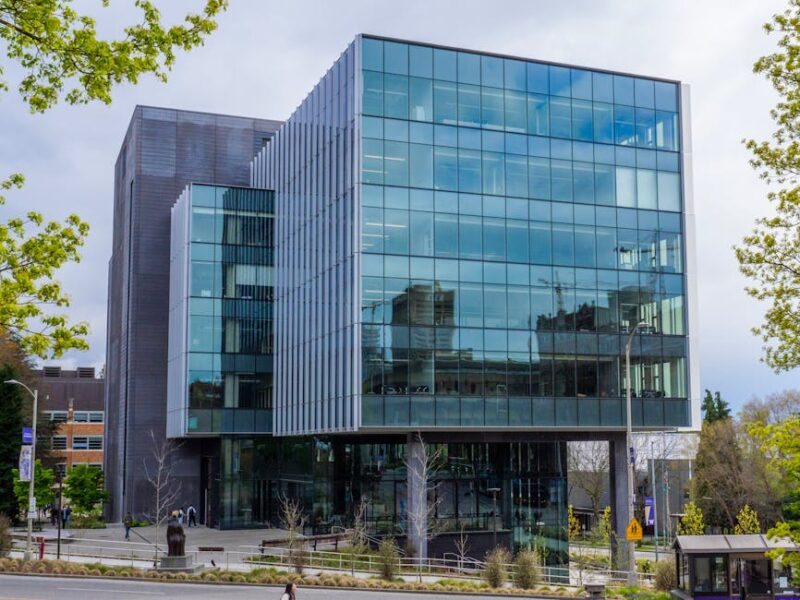How to improve cultural awareness in the workplace is an essential focus for many businesses today. As workplaces become increasingly diverse, understanding and navigating this landscape is crucial. Here’s a quick overview of effective strategies:
- Invest in Global Citizenship Training: Provide employees with cultural knowledge tailored to your business needs.
- Promote Culturally Sensitive Communication: Foster communication that is clear, simple, and respectful across all cultures.
- Celebrate Traditional Holidays: Recognize diverse cultures to enhance inclusivity and job satisfaction.
- Listen to Foreign Clients and Colleagues: Embrace new customs and perspectives with an open mind.
- Pay Attention to Cultural Differences: Respect holidays and customs to build positive relationships.
In today’s global market, diverse workplaces are the norm rather than the exception. Cultural engagement is key to creating a harmonious environment where barriers are broken, and common goals can be pursued. Research indicates that by understanding different cultural backgrounds, organizations can not only avoid conflicts but also achieve a more cohesive and productive workforce.
I’m Gabrielle Reese, and my expertise in cultural awareness comes from years of international work experience and assisting businesses in understanding how to improve cultural awareness in the workplace. Join me as we explore how to establish a successful and inclusive workplace culture.
Know your how to improve cultural awareness in the workplace terms:
– better work culture
– creating a positive culture at work
Table of Contents
ToggleWhy Cultural Awareness Matters
In today’s interconnected world, cultural awareness is more crucial than ever. It’s about recognizing and respecting the diverse backgrounds of our colleagues and clients. But why does this matter so much in the workplace?
Cultural Intelligence: The Key to Success
Cultural intelligence is the ability to relate and work effectively across cultures. It’s a skill that goes beyond just knowing facts about different cultures. It involves understanding people’s values, beliefs, and behaviors. This intelligence helps in avoiding misunderstandings and fosters better communication.
Effective Communication: Bridging the Gap
Effective communication is the cornerstone of any successful organization. When employees understand cultural nuances, they can communicate more clearly and effectively. This reduces the chances of misinterpretation and conflict.
Building Inclusive Workplaces
Inclusive workplaces are not just about diversity in numbers. They’re about creating an environment where everyone feels valued and respected. When employees are comfortable being themselves, they are more engaged and productive.
Organizational Success: The Bigger Picture
Organizations that prioritize cultural awareness tend to be more successful. They attract a diverse talent pool, which leads to a richer mix of ideas and innovation. A McKinsey & Company report found that companies with greater cultural diversity are 36% more likely to outperform their peers financially.
Embracing Cultural Differences
Understanding cultural differences isn’t just a moral obligation—it’s a business imperative. By embracing these differences, companies can create a more harmonious and productive environment. This not only benefits the organization but also contributes to a more inclusive society.
In the next section, we’ll explore practical steps to improve cultural awareness in the workplace. From global citizenship training to celebrating traditional holidays, we’ll dive into actionable strategies that can make a real difference.
How to Improve Cultural Awareness in the Workplace
Invest in Cultural Competence Training
Building cultural competence starts with education. Investing in Cultural Competence Training can significantly improve your team’s ability to navigate cultural differences. These training sessions focus on developing skills in communication, business etiquette, and negotiation. Such workshops empower employees to handle the complexities of a diverse global economy.
Promote Culturally Sensitive Communication Skills
Effective communication is crucial in avoiding cultural barriers. Encourage your team to learn about the local culture of their clients and colleagues. This includes understanding non-verbal communication cues, which often vary across cultures. For instance, while direct eye contact is a sign of honesty in some cultures, it may be seen as disrespectful in others. Knowing these nuances helps in building stronger relationships and preventing misunderstandings.
Celebrate Traditional Holidays
Recognizing and celebrating traditional holidays fosters a sense of inclusivity and respect for cultural heritage. It boosts job satisfaction and productivity by making employees feel valued. Encourage cross-cultural communication by hosting events or discussions around these holidays. This not only celebrates diversity but also educates employees about different cultures.
Listen to Foreign Clients and Colleagues
An open mind is key to understanding different customs and perspectives. Practice active listening and observation to learn from your foreign clients and colleagues. This approach helps in resolving cultural conflicts by acknowledging and respecting diverse viewpoints. Listening is not just about hearing words; it’s about understanding the context and emotions behind them.
Pay Attention to Cultural Differences
Being mindful of national and religious holidays and local customs is essential. Adapt your communication style to align with cultural preferences, which fosters positive relationships. For example, some cultures prefer indirect communication, while others value straightforwardness. Tailor your approach to meet these expectations and show respect for cultural differences.
Be Aware of Different Time Zones
Working across different time zones requires careful planning. Use online tools like The World Clock or Time Zone Converter to track time differences and schedule meetings during business hours. This consideration shows respect for your colleagues’ and clients’ time, enhancing collaboration and communication.
By implementing these strategies, organizations can overcome cultural barriers and create a more inclusive and harmonious workplace. Next, we’ll discuss how to build a comprehensive cultural awareness program that fosters empathy and understanding.
Building a Cultural Awareness Program
Creating a robust cultural awareness program is essential for fostering an inclusive and harmonious workplace. Here are some practical steps to help you build one:
Identify the Need and Gain Support
Start by assessing the diversity within your organization. Conduct a diversity assessment to understand the unique cultural dynamics at play. This forms the basis of a compelling business case for cultural awareness initiatives. Share these insights with management and colleagues to gain their support.
Once you have the backing, bring in a facilitator who can guide discussions. This person should foster a respectful environment where employees feel safe to share. Use open-ended questions to encourage dialogue and introspection. This approach helps identify areas where cultural awareness can be improved.
Provide Cultural Training and Workshops
Cultural training is a cornerstone of any awareness program. Educate employees on key concepts like cultural intelligence and cultural differences. Use role-plays, case studies, and ERGs (Employee Resource Groups) to make the learning interactive and relatable.
Workshops should go beyond just identifying differences. Encourage introspection to help employees understand their own cultural biases and how these affect interactions with others. This deeper understanding promotes empathy and reduces reliance on stereotypes and cultural generalizations.
Reinforce Learning with Resources and Support
Learning about culture is an ongoing process. Provide continuous resources like books, articles, and online courses to deepen understanding. Celebrate cultural months and holidays to raise awareness and appreciation for different traditions.
Consider offering language training or exchange programs to provide hands-on learning experiences. These initiatives not only improve communication skills but also promote cultural appreciation and understanding.
Integrate Cultural Awareness into Policies and Practices
Review your organization’s policies through the lens of DEI (Diversity, Equity, and Inclusion). Ensure that your workplace harassment and confidentiality policies reflect cultural sensitivity. Create pathways for career development and succession planning that are inclusive and equitable.
Collect feedback regularly to measure the effectiveness of these initiatives. This helps in identifying areas for improvement and ensures that the programs remain relevant and impactful.
By following these steps, organizations can build a cultural awareness program that encourages empathy, reduces prejudice, and improves collaboration. This approach not only supports individual growth but also drives organizational success.
Benefits of Cultural Awareness in the Workplace
Establishes a Secure Working Environment
A secure working environment is crucial for employee well-being and productivity. Cultural awareness plays a key role in creating such an environment by promoting a positive safety culture. When employees feel their mental well-being and physical safety are protected, they can focus better on their tasks.
In an inclusive environment, everyone feels comfortable expressing their ideas without fear of discrimination. This openness fosters trust and respect among colleagues, reducing cultural barriers and building cultural bridges.
Increases the Diversity and Strength of the Talent Pool
Practicing cultural awareness improves the recruiting process by attracting a diverse workforce. Companies known for their multiculturalism often receive applications from a wider range of candidates, enriching the talent pool. This diversity brings a variety of skill sets and perspectives, which can be a significant competitive advantage.
A diverse workforce is not only more innovative but also better equipped to understand and serve a global market. This understanding boosts market reach and enables the organization to connect with a broader audience.
Unintentional Prejudice is Minimized
Bias can unintentionally affect decision-making, leading to unfair treatment of employees. By fostering cultural awareness, organizations can minimize unintentional prejudice. This is achieved by promoting inclusion and understanding of different cultural values and characteristics.
When employees are educated about cultural differences, they become more open-minded and less likely to rely on stereotypes. This leads to fairer recruitment, promotion, and evaluation processes.
Collaboration is Improved
Collaboration is vital for organizational success. Cultural awareness improves teamwork by encouraging open-mindedness and appreciation of diverse perspectives. When employees from different backgrounds work together, they bring unique insights and ideas, leading to better problem-solving and innovation.
A culture that values diversity fosters a sense of unity. Employees are more likely to collaborate effectively when they feel their contributions are valued and respected.
Improves Work Satisfaction
Workplace satisfaction is closely tied to a sense of accomplishment and joy at work. A culturally aware workplace is more likely to be collaborative and welcoming. Employees who feel valued and understood are more engaged and motivated.
When cultural awareness is prioritized, employees experience higher job satisfaction. They are happier and more productive, contributing positively to the organization’s overall success. This leads to lower turnover rates and a more committed workforce.
Investing in cultural awareness is not just about compliance; it’s about creating a thriving workplace where everyone feels empowered to contribute their best.
Frequently Asked Questions about Cultural Awareness in the Workplace
How can cultural awareness be improved in the workplace?
Improving cultural awareness in the workplace involves several practical steps:
-
Invest in Global Citizenship Training: Workshops and training sessions focusing on cultural competence can boost employees’ understanding of different cultures. Programs like those from DeakinCo. help develop communication and negotiation skills critical for operating in a global economy.
-
Promote Culturally Sensitive Communication: Encourage employees to learn about different communication styles, including non-verbal cues. This helps prevent misunderstandings and builds stronger relationships.
-
Celebrate Traditional Holidays: Recognizing and celebrating diverse cultural holidays can improve inclusivity and job satisfaction. It promotes cross-cultural communication and understanding among employees.
-
Listen to Foreign Clients and Colleagues: Cultivate an open mind and practice active listening to appreciate different customs and perspectives. This reduces cultural conflict and fosters a more harmonious workplace.
-
Pay Attention to Cultural Differences: Be mindful of national and religious holidays, local customs, and communication styles. This awareness nurtures positive relationships and respects diverse cultural backgrounds.
-
Be Aware of Different Time Zones: Use online tools like The World Clock to accommodate time differences when scheduling meetings with global teams.
What are some examples of cultural awareness activities?
Cultural awareness activities can be simple yet effective:
-
Cultural Potlucks: Encourage employees to bring dishes from their cultural backgrounds to share with colleagues. This promotes cultural exchange through food.
-
Storytelling Sessions: Invite employees to share stories about their cultural heritage or traditions. This builds empathy and understanding.
-
Diversity Book Clubs: Host discussions around books that explore different cultures and perspectives. This can stimulate thought-provoking conversations and broaden cultural knowledge.
-
Language Exchange Programs: Facilitate opportunities for employees to learn new languages from their peers. This not only improves communication but also shows respect for different cultures.
-
Cultural Awareness Workshops: Conduct sessions that focus on understanding cultural differences and breaking down stereotypes. Role-plays and case studies can be particularly engaging and informative.
Why is cultural awareness important in the workplace?
Cultural awareness is essential for several reasons:
-
It fosters effective communication by helping employees understand diverse perspectives and communication styles. This leads to fewer misunderstandings and smoother interactions.
-
An inclusive workplace is more likely to be successful. When employees feel valued and understood, they are more engaged and productive.
-
Understanding cultural differences can lead to better organizational success. Companies with culturally aware teams can steer global markets more effectively, enhancing their market reach and competitiveness.
-
It reduces cultural conflicts by promoting empathy and respect for different cultural values and practices. This creates a harmonious work environment where everyone feels accepted and valued.
By integrating these practices, organizations can create a workplace that not only respects diversity but thrives on it.
Conclusion
At Versed Entrepreneur, we believe that fostering inclusive workplaces is not just an ideal—it’s a strategic necessity. As we’ve explored, cultural competence is a vital component of organizational success in today’s diverse global economy. By investing in cultural awareness, companies can not only improve communication and productivity but also build a foundation for sustainable success.
Cultural competence is about more than just understanding other cultures—it’s about integrating that understanding into everyday practices. This involves developing personalized leadership approaches that align with inclusive values and encourage a culture of respect and empathy. Leaders who prioritize these values can inspire their teams to achieve remarkable outcomes, as noted by experts like James M. Kouzes and Barry Posner.
The benefits of cultural awareness extend beyond immediate workplace improvements. As we cultivate environments where diversity is celebrated and all voices are heard, we pave the way for long-term growth and innovation. This not only strengthens our talent pool but also improves our ability to collaborate and create.
For organizations looking to open up the full potential of their workforce, embracing cultural awareness is key. By doing so, we can transform our workplaces into thriving ecosystems of diversity and unity.
For more insights on enhancing workplace culture and productivity, visit our Business Ops page.
This is not legal advice and reach out to a professional if you have any questions.











